Lichfield, Staffordshire
Up to 1834
Prior to the 1834 Poor Law Act, each of Lichfield's three parishes (St Mary's, St Chad's and St. Michael's) organized its own poor relief independently. Between 1691 and 1696, the corporation let a house on the south side of Sanford Street for use as a linen manufactory for the employment of the city's poor. The building continued on and off in such a role until it underwent an refurbishment in 1724, when part of it was adapted for use as a "House of Correction" (an early type of prison). By 1728, poor from St Mary's occupied part of the building. Also in that year, St Michael's parish took over the lower part of the building for pauper accommodation at a rent of 4d per year with the right to take in a garden and erect a pigsty.
In 1740 St Michael's and St Chad's decided to set up a joint workhouse at Greenhill, then in 1781 St Chad's set up its own workhouse in Stowe Street. Eden, in his 1797 survey of the poor in England, reported that:
Rugeley erected a parish workhouse on Chaseley Road in around 1780.
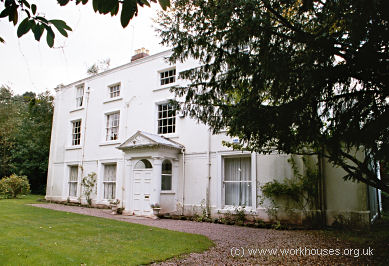
Rugeley former parish workhouse, 2004.
© Peter Higginbotham.
After 1834
Lichfield Poor Law Union was formed on 21st December 1836. Its operation was overseen by an elected Board of Guardians, 40 in number, representing its 29 constituent parishes as listed below (figures in brackets indicate numbers of Guardians if more than one):
City and County of Lichfield:
St Chad (2); St Mary (3); St Michael (2).
Staffordshire:
Alrewas (2); Armitage with Handsacre; Burntwood, Edial and Woodhouses; Colton; Curborough and Elmhurst; Elford; Farewell and Chorley; Fisherwick; Fradley; Hammerwich; Hamstall Ridware; King's Bromley;
Longdon (2); Manesyn Ridware; Orgreave; Pipehill; Pipe Ridware; Rugeley (4); Shenstone (2); Streethay; Swinfen and Packington; Wall; Weeford; Whittington; Yoxall (2).
Later Additions: Alrewas Hays (1858-85), Brereton (1894-1930), Freeford (1858-1930),
Fulfen (1858-1930), Haselour (1858-1930), King's Bromley Hays (1858-1922),
Ogley Hay (1837), Shire Oak (1894-1930), Tamhorn (1858-1930).
The population falling within the union at the 1831 census had been 22,747 — ranging from Wall (population 93) to Lichfield itself (total of 6,232 for all three parishes). The average annual poor-rate expenditure for the period 1834-36 had been £7,978.
The new Lichfield Union's Board of Guardians met for the first time on 21st December 1836. Edward Grove was appointed Chairman, the Revd William Gresley as Vice-chairman, and Philip Dyott as Clerk to the Board of Governors. In addition, two relieving officers were appointed each at a salary of £100 per annum, and John Hewitt was appointed as Medical Relief Officer at £50 per annum (Leighfield).
At a subsequent meeting on 9th March 1837, it was decided to advertise in The Staffordshire Advertiser, The Birmingham Herald, and The Wolverhampton Chronicle for "Plans and Specifications for a Workhouse to hold two hundred Paupers, in accordance with Mr Kempthorne's Model."
The successful applicants were George Gilbert Scott and William Bonython Moffatt. The building, which cost £2,939, was erected at a site on the north side of Trent Valley Road, on land purchased from Lichfield Corporation and from Lord Lichfield. The new building was to be constructed in red brick (made from the clay dug out from the workhouse foundations) embellished by blue bricks at the front and sides. The builder was William Sissons of Hull. Work began on 24th May, 1838, with a foundation stone being laid by the Chairman, Edward Grove. The building received its first inmates almost exactly two years later on 24th May, 1840. Up until this point, the Union had continued to use former parish workhouse accommodation from St Mary's in Sanford Street, and at Rugeley.
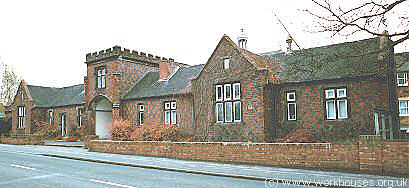
Lichfield, 2000.
© Peter Higginbotham.
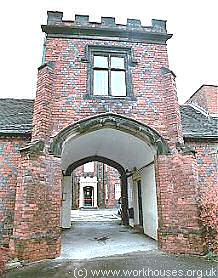
Lichfield, 2000.
© Peter Higginbotham.
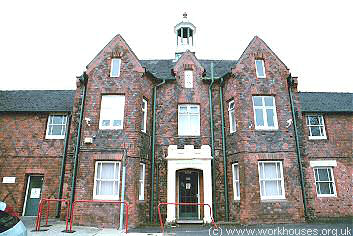
Lichfield, 2000.
© Peter Higginbotham.
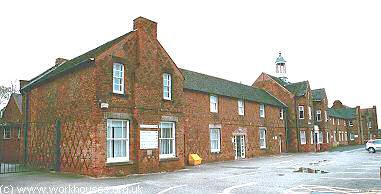
Lichfield, 2000.
© Peter Higginbotham.
Casual wards were added in 1874, and an infirmary to the north of the site in 1892. The site layout from around 1900 is shown on the map below:
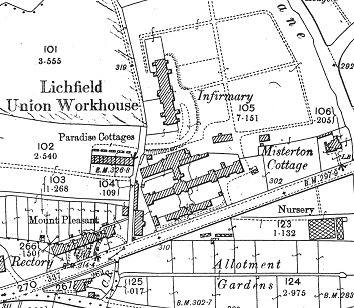
Lichfield Workhouse Site, c.1900
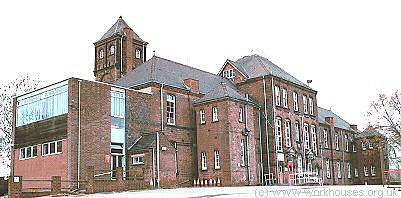
Lichfield infirmary block, 2000.
© Peter Higginbotham.
The former workhouse later became St Michael's Hospital.
Children's Homes
By the late 1890s, the Lichfield Union was sending children to the District Schools at Wigmore, with Roman Catholic children being placed in orphanages at Birmingham and Coleshill. In the early 1900s, the union rented house to accommodate boys in Tamworth Street, Lichfield, while the girls went to the Barnardo's Home at Barkingside in Essex.
In 1909, the union erected children's homes (one for boys and one for girls) for pauper children on Wissage Lane (now Scotch Orchard). In 1924 the homes could accommodate 60 children, with A.E. Boardman as Superintendent.
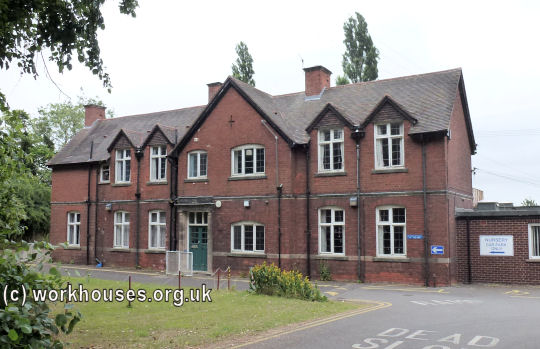
Lichfield children's homes, 2013.
© Peter Higginbotham.
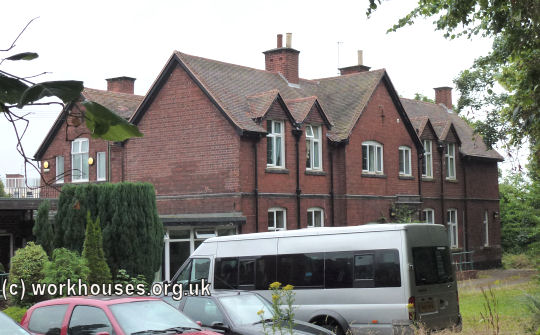
Lichfield children's homes, 2013.
© Peter Higginbotham.
In 1930, the running of the home was taken over by the Staffordshire County Council and renamed the Poplars. In more recent times, it has provided a variety of support services for families and for children and young adults with learning difficulties
Staff
Inmates
Records
Note: many repositories impose a closure period of up to 100 years for records identifying individuals. Before travelling a long distance, always check that the records you want to consult will be available.
- Lichfield Record Office, The Friary, Lichfield, WS13 6QG. Limited holdings include: Guardians' minute books (1836-1930) etc.
Bibliography
- Leighfield, EJ (1978) The History of St Michael's Hospital, Lichfield
- Hutchinson M, Croot I, and Sadowski, A (2010) This Won't Hurt: A History of the Hospitals of Lichfield Now on sale - More details and order form
Links
- None.
Unless otherwise indicated, this page () is copyright Peter Higginbotham. Contents may not be reproduced without permission.


